Looking Back: 50 Years Of ATW Awards, Key Industry Events - Part 3

Air Transport World’s annual air transport achievement awards program was created in 1974. As ATW prepares to celebrate the 50th anniversary of the Awards on May 31, we are recognizing each decade of winners.
This issue covers 1994 to 2003, which saw commercial aviation transition from elite travel to affordable air transport for the mass market, particularly in the transatlantic market. The trend was fueled by US deregulation and global liberalization, and was facilitated by the ability of central reservation systems (CRS) as computer technology and the World Wide Web grew.
Low-cost airlines were rapidly spreading in short-haul markets and the competitive response from established carriers was beginning to have a dramatic effect on fares and yields.
As the calendar turned to 2000 amid fears of the Y2K bug, the industry breathed a collective sigh of relief with a smooth transition across the world’s ATC systems. Key challenges were catering to a growing leisure market and containing costs.
Then came 9/11/2001, when terrorism targeted airliners and forever changed the face of aviation and security standards.
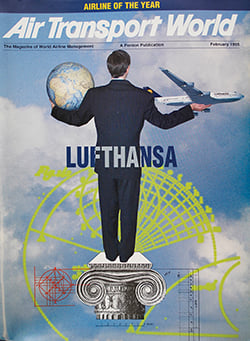
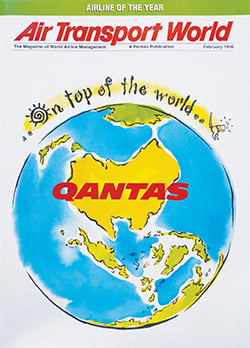



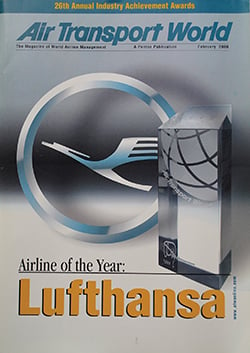

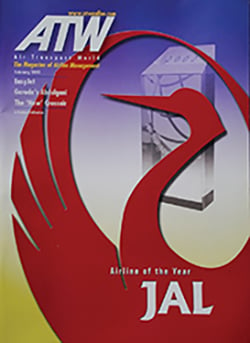

KEY EVENTS
February 1994: The Airbus A321 was certified and handed over to launch customer Lufthansa.
March 1994: Ireland-based Aer Lingus was the first to fly the Airbus A330-300 across the North Atlantic.
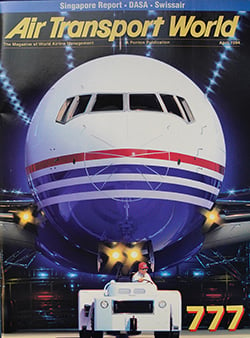
May 1994: The Boeing 777 rolled out in April 1994 and flew for 3 hr., 48 min. on its maiden flight on June 12. The aircraft, with Pratt & Whitney PW4984s on its wings, reached 19,000 ft. The aircraft entered service with launch operator United Airlines in June 1995.
September 1994: United Airlines planned to unveil optional electronic “ticketless travel” for users of the “Shuttle by United,” later that fall.
November 1994: The rapid spread of so-called “low-fare airlines” in short-haul markets and the competitive response from established carriers were beginning to have a dramatic effect on US airline fares and yields.
November 1994: The Airbus A300-600ST (Super Transport) lifted off from Toulouse on its maiden flight on Sept. 12, 1994, on a 4 hr., 21 min. flight.
December 1994: The inflight entertainment (IFE) industry was rapidly changing. Spurred by new capabilities in satellite communications and digital electronics, and the airlines’ hunger for new revenue sources, manufacturers of entertainment and communication equipment were developing a wide variety of systems and programs.
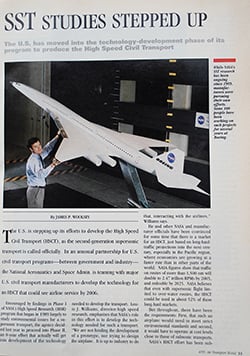
June 1995: McDonnell-Douglas delivered the MD-90 to launch customer Delta Air Lines.
August 1995: Air Canada became the first North American operator of the Airbus A340 after taking delivery of the first of two leased from ILFC.
August 1995: United Parcel Service (UPS) became the launch customer of the Boeing 767 freighter.
September 1995: Airbus rolled out the A319 in August 1995, completing its “family” of single-aisle jetliners.
October 1995: McDonnell Douglas launched its 100-seat MD-95 on the back of a single 50-aircraft order from Georgia-headquartered LCC ValuJet Airlines, which rebranded as AirTran in 1997 and was acquired by Southwest Airlines in 2011.
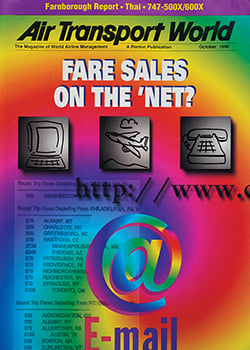
March 1996: The US and Germany announced an Open Skies aviation framework.
March 1996: Regional jets were becoming accepted as the future of regional airline operations, a revolution with effects felt by much larger carriers.
October 1996: Boeing launched the 757-300 in September 1996.
December 1996: Boeing rolled out the 737-700; first delivery was made in December 1997 to Southwest Airlines.
January 1997: 1996 began with the collapse of Fokker Aircraft and ended with the disappearance of McDonnell Douglas, which on Dec. 15 agreed to be acquired by Boeing.
April 1997: European cabotage was allowed from April 1, the final stage of the revolution in air-travel competition in Europe enabled by Open Skies.
August 1997: The Airbus A330-200, powered by CF6-80E1 engines, made its first flight Aug. 13.
November 1997: Boeing rolled out the 777-300, the stretched version of the -200, in September, followed by the first flight in October of that year. Cathay Pacific became the launch customer in May 1998.
July 1998: Boeing rolled out the 757-300 on May 31, 1998, and completed its maiden flight on Aug. 2. It was put into service with German leisure carrier Condor Airlines in March 1999.
January 1999: As the online world increased, central reservation systems, or CRS, were being slowly developed and utilized.
June 1999: Airbus planned to proceed with its 107-seat A318, which made its first flight in January 2002. First customer delivery was in July 2003 to Frontier Airlines.
October 1999: Boeing’s 767-400ER completed its first flight and entered service with Continental Airlines in September 2000.

February 2000: “Success [stop] Inform press [stop]”— then-FAA Administrator Jane Garvey quoted Orville and Wilber Wright in a letter to President Bill Clinton announcing that the US ATC system functioned smoothly through the Y2K rollover.
September 2000: The decisions by the UK CAA and French DGAC to suspend the Concorde’s airworthiness certificate from Aug. 16 following the crash of an Air France Concorde outside Paris was predicted to be the end of the aged supersonic jet. The Concorde made its final flight on Nov. 26, 2003.
February 2001: American Airlines and United Airlines were dividing up US Airways as American absorbed TWA.

August 2002: Low-fare airlines achieved critical mass in many parts of the world and were infiltrating network carrier systems.
September 2002: In the rush to fortify the aviation system in the US after the 9/11 terrorist attacks, security took precedence over all other considerations. The US Department of Homeland Security was established in April 2022, which would lead to the formation within it of the Transportation Security Administration (TSA).
December 2002: Boeing abandoned the Sonic Cruiser program in favor of the slower but more efficient Project Yellowstone/7E7 (later renamed Boeing 787 Dreamliner).
May 2003: Airlines in the Asia-Pacific region saw traffic demand slump because of severe acute respiratory syndrome, or SARS.
